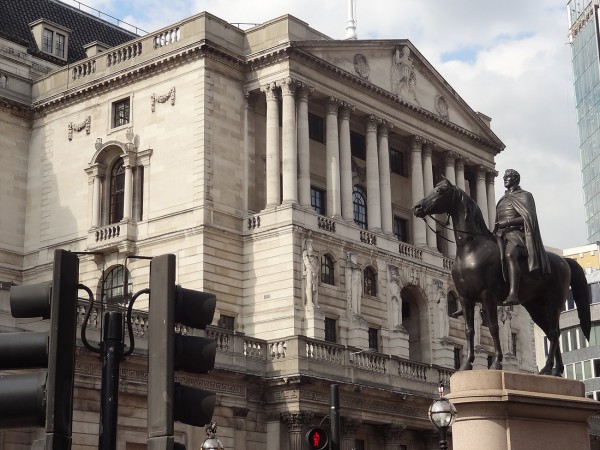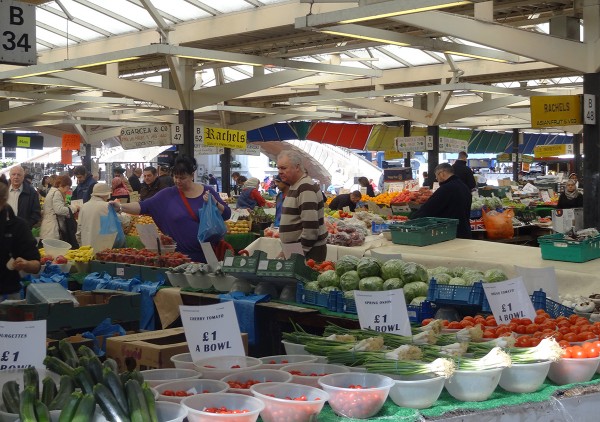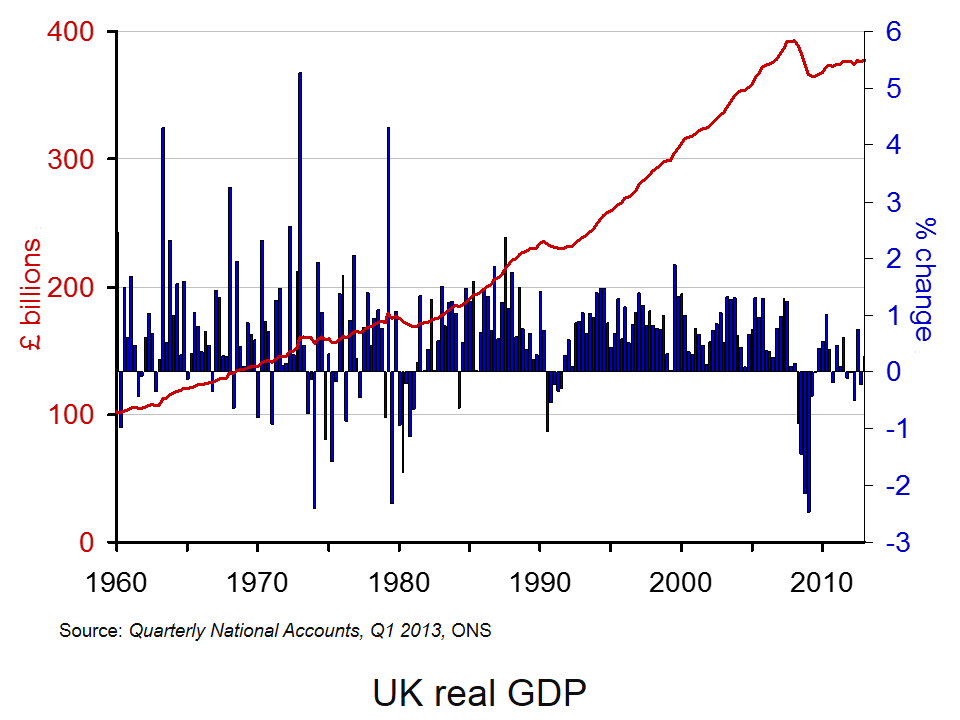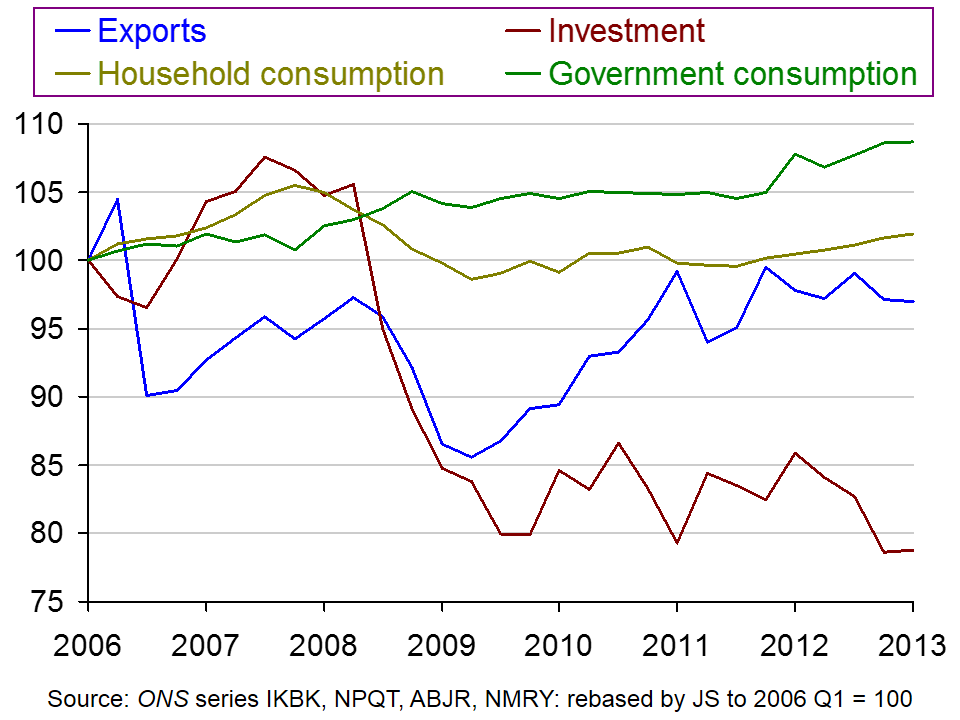 Each day many investors anxiously watch the stock market to see if their shares have gone up or down. They may also speculate: buying if they think share prices are likely to go up; selling if they think their shares will fall. But what drives these expectations?
Each day many investors anxiously watch the stock market to see if their shares have gone up or down. They may also speculate: buying if they think share prices are likely to go up; selling if they think their shares will fall. But what drives these expectations?
To some extent, people will look at real factors, such as company sales and profits or macroeconomic indicators, such as the rate of economic growth or changes in public-sector borrowing. But to a large extent people are trying to predict what other people will do: how other people will react to changes in various indicators.
 John Maynard Keynes observed this phenomenon in Chapter 12 of his General Theory of Employment, Interest and Money of 1936. He likened this process of anticipating what other people will do to a newspaper beauty contest, popular at the time. In fact, behaviour of this kind has become known as a Keynesian beauty contest (see also).
John Maynard Keynes observed this phenomenon in Chapter 12 of his General Theory of Employment, Interest and Money of 1936. He likened this process of anticipating what other people will do to a newspaper beauty contest, popular at the time. In fact, behaviour of this kind has become known as a Keynesian beauty contest (see also).
Keynes wrote that:
professional investment may be likened to those newspaper competitions in which the competitors have to pick out the six prettiest faces from a hundred photographs, the prize being awarded to the competitor whose choice most nearly corresponds to the average preferences of the competitors as a whole; so that each competitor has to pick, not those faces which he himself finds prettiest, but those which he thinks likeliest to catch the fancy of the other competitors, all of whom are looking at the problem from the same point of view. It is not a case of choosing those which, to the best of one’s judgement, are really the prettiest, nor even those which average opinion genuinely thinks the prettiest. We have reached the third degree where we devote our intelligences to anticipating what average opinion expects the average opinion to be. And there are some, I believe, who practise the fourth, fifth and higher degrees.
When investors focus on people’s likely reactions, it can make markets very unstable. A relatively minor piece of news can cause people to buy or sell in anticipation that others will do the same and that others will realise this and do the same themselves. Markets can overshoot, until, when prices have got out of line with fundamentals, buying can turn into selling, or vice versa. Prices can then move rapidly in the other direction, again driven by what people think other people will do. Sometimes, markets can react to very trivial news indeed. As the New York Times article below states:
On days without much news, the market is simply reacting to itself. And because anxiety is running high, investors make quick, sometimes impulsive, responses to relatively minor events.
The rise of the machine
 In recent years there is a new factor to account for growing stock market volatility. The Keynesian beauty contest is increasingly being played by computers. They are programmed to buy and sell when certain conditions are met. The hundreds of human traders of the past who packed trading floors of stock markets, have been largely replaced by just a few programmers, trained to adjust the algorithms of the computers their finance companies use as trading conditions change.
In recent years there is a new factor to account for growing stock market volatility. The Keynesian beauty contest is increasingly being played by computers. They are programmed to buy and sell when certain conditions are met. The hundreds of human traders of the past who packed trading floors of stock markets, have been largely replaced by just a few programmers, trained to adjust the algorithms of the computers their finance companies use as trading conditions change.
And these computers react in milliseconds to what other computers are doing, which in turn react to what others are doing. Markets can, as a result, suddenly soar or plummet, until the algorithms kick the market into reverse as computers sell over-priced stock or buy under-priced stock, which triggers other computers to do the same.
Robot trading is here to stay. The articles and podcast consider the implications of the ‘games’ they are playing – for savers, companies and the economy.
Articles
Questions
- Give some other examples of human behaviour which is in the form of a Keynesian beauty contest.
- Why may playing a Keynesian beauty contest lead to an undesirable Nash equilibrium?
- Does robot trading do anything other than simply increase the speed at which markets adjust?
- Can destabilising speculation continue indefinitely? Explain.
- Explain what is meant by ‘overshooting’? Why is overshooting likely to occur in stock markets and foreign exchange markets?
- In what ways does robot trading (a) benefit and (b) damage the interests of savers?
 Apple was last week found guilty in the US for its role in the fixing of e-book prices. A subsequent hearing will now be held to determine the damages that Apple will be forced to pay. However, Apple vehemently denies the allegations and looks set to appeal the decision.
Apple was last week found guilty in the US for its role in the fixing of e-book prices. A subsequent hearing will now be held to determine the damages that Apple will be forced to pay. However, Apple vehemently denies the allegations and looks set to appeal the decision.
To understand what the US Department of Justice (the European Commission has also brought a case) is objecting to, we need to look back to how pricing in this rapidly growing market has evolved over time.
Until the end of 2009 e-books were sold under a wholesale pricing model. Here, publishers charge retailers a wholesale price per book and retailers are then free to charge final consumers whatever price they choose. This all changed in the US (there were also similar developments in Europe) during an eventful period of a few days in January 2010 when Apple unveiled its iPad for April release.
The publisher Macmillian proposed that Amazon switch to an agency pricing model under which the publisher sets the retail price. This is typically referred to by economists as Resale Price Maintenance (RPM). Interestingly, RPM has a long history in the book industry. In the UK for example, throughout most of the last century publishers set prices under the Net Book Agreement, until this broke down in the mid 1990s. In addition, in some countries, for example Germany, books continue to be sold under RPM.
Macmillan also threatened Amazon that if it preferred to keep wholesale pricing it would delay the supply of e-book releases to them. Amazon initially responded by refusing to stock Macmillan titles. However, soon after Amazon ceded to Macmillan’s proposal. Despite this, Amazon made clear its dissatisfaction to its customers:
We have expressed our strong disagreement and the seriousness of our disagreement by temporarily ceasing the sale of all Macmillan titles. We want you to know that ultimately, however, we will have to capitulate and accept Macmillan’s terms because Macmillan has a monopoly over their own titles, and we will want to offer them to you even at prices we believe are needlessly high for e-books.
It turned out that 5 of the 6 major publishers (including Macmillan) had already agreed the same agency terms to sell e-books for Apple devices. Like Macmillan, the other publishers all then also imposed agency pricing on Amazon. Furthermore, crucial to the contracts agreed with Apple was a so called ‘most-favoured customer’ clause which guaranteed that e-books would not be sold elsewhere at prices below those charged to Apple customers. Effectively, therefore, this clause made it necessary for the publishers to impose agency terms on Amazon. The Department of Justice objected to this and believed consumers would be harmed due to higher prices. All of the publishers involved eventually decided to settle the case, leaving Apple alone to fight the case in court.
In the decision Judge Cote concluded that:
the publisher defendants conspired with each other to eliminate retail price competition in order to raise e-book prices, and that Apple played a central role in facilitating and executing that conspiracy. Without Apple’s orchestration of this conspiracy, it would not have succeeded as it did in the Spring of 2010.
It is interesting to consider the reasons why the publishers would be keen to take control of the prices Amazon charges for e-books. Evidence suggests that Amazon was frequently retailing e-books at substantial discounts and even below wholesale costs. One explanation for this is that Amazon was keen to increase demand for Kindle devices. The publishers, on the other hand, might well be concerned about the implications of Amazon dominating the e-book market. Potentially, this would give Amazon significant bargaining power over them.
Of course, such dominance might also have knock-on effects on consumer prices in the long-run. Whether the publishers will be permitted to use agency pricing to mitigate such concerns in the future remains unclear and depends on whether the competition authorities object to agency pricing per se or just the coordinated way in which it was achieved.
As the articles below demonstrate, opinion is strongly divided for and against the judgement against Apple.
EU raids ebook publishers in price fixing investigation The Guardian, Benedicte Page and Leigh Phillips (4/3/11)
Apple Faces Damages Trial Over E-Book Antitrust Violation Bloomberg Businessweek, Bob Van Voris, Adam Satariano and David McLaughlin (10/7/13)
Apple played ‘central role’ in ebook price-fixing conspiracy, says federal judge The Guardian, Amanda Holpuch (11/7/13)
US: Apple found guilty, but what happens next? Competition Policy International (11/7/13)
Why It’s Insane That No One Cares About Apple’s Price-Fixing Conspiracy (AAPL) Seattle pi, Jim Edwards (13/7/13)
Apple Learns The Hazards Of Innovation With E-Book Antitrust Ruling Forbes, Daniel Fisher (10/7/13)
Questions
- What are the important features of the e-book market?
- What are the key differences between the traditional and e-book markets?
- To what extent do Amazon and Apple have different incentives in the e-book market?
- Do you think Resale Price Maintenance is more likely to harm competition in the market for traditional or e-books?
- What do you think might be the short and long-run implications of this decision?
 Tight fiscal policies are being pursued in many countries to deal with high public-sector deficits that resulted from the deep recession of 2008/9. This has put the main onus on monetary policy as the means of stimulating recovery. As a result we have seen record low interest rates around the world, set at only slightly above zero in the main industrialised countries for the past 4½ years. In addition, there have been large increases in narrow money as a result of massive programmes of quantitative easing.
Tight fiscal policies are being pursued in many countries to deal with high public-sector deficits that resulted from the deep recession of 2008/9. This has put the main onus on monetary policy as the means of stimulating recovery. As a result we have seen record low interest rates around the world, set at only slightly above zero in the main industrialised countries for the past 4½ years. In addition, there have been large increases in narrow money as a result of massive programmes of quantitative easing.
Yet recovery remains fragile in many countries, including the UK and much of the rest of Europe. And a new problem has been worries by potential investors that loose monetary policy may be soon coming to an end. As the June blog The difficult exit from cheap money pointed out:
The US economy has been showing stronger growth in recent months and, as a result, the Fed has indicated that it may soon have to begin tightening monetary policy. It is not doing so yet, nor are other central banks, but the concern that this may happen in the medium term has been enough to persuade many investors that stock markets are likely to fall as money eventually becomes tighter. Given the high degree of speculation on stock markets, this has led to a large-scale selling of shares as investors try to ‘get ahead of the curve’.
Central banks have responded with a new approach to monetary policy. This is known as ‘forward guidance’. The idea is to manage expectations by saying what the central bank will do over the coming months.
The USA was the first to pursue this approach. In September 2012 the Fed committed to bond purchase of $40bn per month (increased to $85bn per month in January 2013) for the foreseeable future; and record low interest rates of between 0% and 0.25% would continue. Indeed, as pointed out above, it was the ‘guidance’ last month that such a policy would be tapered off at some point, that sent stock markets falling in June.
The Fed has since revised its guidance. On 10 July, Ben Bernanke, the Fed Chairman said that monetary policy would not be tightened for the foreseeable future. With fiscal policy having been tightened, QE would continue and interest rates would not be raised until unemployment had fallen to 6.5%.
Japan has been issuing forward guidance since last December. Its declared aim has been to lower the exchange rate and raise inflation. It would take whatever fiscal and monetary policies were deemed necessary to achieve this (see A J-curve for Japan? and Japan’s three arrows).
Then on 4 July both the Bank of England and the ECB adopted forward guidance too. Worried that growth in the US economy would lead to an end to loose monetary policy before too long and that this would drive up interest rates worldwide, both central banks committed to keeping interest rates low for an extended period of time. Indeed, the ECB declared that the next movement in interest rates would more likely be down than up. Mario Draghi, the ECB president said that the ending of loose monetary policy is ‘very distant’.
The effect of this forward guidance has been to boost stock markets again. The hope is that by managing expectations in this way, the real economy will be affected too, with increased confidence leading to higher investment and faster economic growth.
Articles
Q&A: What is ‘forward guidance’ BBC News, Laurence Knight (4/7/13)
Forward guidance crosses the Atlantic The Economist, P.W. (4/7/13)
ECB has no plans to exit loose policies, says Benoit Coeure The Telegraph, Szu Ping Chan (25/6/13)
ECB issues unprecedented forward guidance The Telegraph, Denise Roland (4/7/13)
Independence day for central banks BBC News, Stephanie Flanders (4/7/13)
The Monetary Policy Committee’s search for guidance BBC News, Stephanie Flanders (16/7/13)
The Monetary Policy Committee’s search for guidance (II) BBC News, Stephanie Flanders (17/7/13)
Bank of England surprise statement sends markets up and sterling tumbling The Guardian, Jill Treanor and Angela Monaghan (4/7/13)
Forward guidance only works if you do it right Financial Times, Wolfgang Münchau (7/7/13)
Fed’s Forward Guidance Failing to Deliver Wall Street Journal, Nick Hastings (15/7/13)
Talking Point: Thoughts on ECB forward guidance Financial Times, Dave Shellock (11/7/13)
Forward guidance in the UK is likely to fail as the Fed taper approaches City A.M., Peter Warburton (12/7/13)
Forward guidance more than passing fashion for central banks Reuters, Sakari Suoninen (11/7/13)
Markets await Mark Carney’s ‘forward guidance’ The Guardian, Heather Stewart (17/7/13)
Beware Guidance The Economist, George Buckley (25/7/13)
UK interest rates held until unemployment falls BBC News (7/8/13)
Central Bank Statements
How does forward guidance about the Federal Reserve’s target for the federal funds rate support the economic recovery? Federal Reserve (19/6/13)
Remit for the Monetary Policy Committee HM Treasury (20/3/13)
Bank of England maintains Bank Rate at 0.5% and the size of the Asset Purchase Programme at £375 billion Bank of England (4/7/13)
Monthly Bulletin ECB (see Box 1) (July 2013)
Inflation Report Press Conference: Opening remarks by the Governor Bank of England (7/8/13)
MPC document on Monetary policy trade-offs and forward guidance Bank of England (7/8/13)
 Interest rates to be held until unemployment drops to 7% BBC News, Statement by Mark Carney, Governor of the Band of England (7/8/13)
Interest rates to be held until unemployment drops to 7% BBC News, Statement by Mark Carney, Governor of the Band of England (7/8/13)
Questions
- Is forward guidance a ‘rules-based’ or ‘discretion-based’ approach to monetary policy?
- Is it possible to provide forward guidance while at the same time pursuing an inflation target?
- If people know that central banks are trying to manage expectations, will this help or hinder central banks?
- Does the adoption of forward guidance by the Bank of England and ECB make them more or less dependent on the Fed’s policy?
- Why may forward guidance be a more effective means of controlling interest rates on long-term bonds (and other long-term rates too) than the traditional policy of setting the repo rate on a month-by-month basis?
- What will determine the likely success of forward guidance in determining long-term bond rates?
- Is forward guidance likely to make stock market speculation less destabilising?
 One very important characteristic of economic growth is its short-term volatility. Economic activity is notoriously volatile. It is such a fundamental idea that economists refer to it as one of their threshold concepts. The volatility of growth sees occasional recessions. The traditional definition is where real GDP (output) declines for 2 or more consecutive quarters. The latest figures from the Quarterly National Accounts call into question whether the UK technically experienced a recession at the start of 2012 with output broadly flat in 2012 Q1 following a contraction of 0.1 per cent in 2011 Q4.
One very important characteristic of economic growth is its short-term volatility. Economic activity is notoriously volatile. It is such a fundamental idea that economists refer to it as one of their threshold concepts. The volatility of growth sees occasional recessions. The traditional definition is where real GDP (output) declines for 2 or more consecutive quarters. The latest figures from the Quarterly National Accounts call into question whether the UK technically experienced a recession at the start of 2012 with output broadly flat in 2012 Q1 following a contraction of 0.1 per cent in 2011 Q4.
The ONS’s latest output numbers raise some interesting questions around our understanding of what constitutes a recession. These figures show that the 2008/9 recession was deeper than first thought with output declining by 7.2 per cent. They show that UK output peaked in 2008Q1 (£392.786 billion at 2010 prices). There then followed 6 quarters where output declined.
Output declined again in 2010 Q4 (–0.2% growth) and again in 2011 Q4 (–0.1% growth). But then interpretations of the data become more controversial. Not least, we get in the debates concerning the accuracy with which we can expect to measure the size of the economy and so to how many decimal places one should realistically measure a rise or fall. In terms of the raw real GDP numbers output fell in 2012 Q1. In 2011 Q4 GDP is estimated at £376,462 billion (at 2010 prices) ‘falling’ to £376,436 billion (at 2010 prices) in 2012 Q1. But, this is a percentage fall only when measured to the third decimal place (–0.007% growth).
In its publication Impact of changes in the National Accounts and economic commentary for Q1 2013 the ONS argue that:
While some commentators may attempt to read some significance into this revision, particularly in the context of whether the UK experienced a “double-dip” recession, it is clearly absurd to imagine that it is possible to measure the size of the economy to this degree of accuracy. The best interpretation of the Blue Book figures is that the economy was flat in the first quarter of 2012, and 0.6% larger than in the same quarter of 2011.
It is however understandable that those with vested interests – including economists, policy-makers and politicians – will take a slightly different view and will read more into the figures than perhaps an objective, sober view might demand. What appears more certain is that output did again fall in 2012 Q2 (–0.5 per cent growth) and in 2012 Q4 (–0.2 per cent growth). Despite estimated growth of 0.3 per cent in 2013 Q1, output remains 3.9 per cent lower than at its 2008 Q1 peak.
Perhaps the ‘absurdity’ or not around the debate of a double-dip recessions strengthens the argument for a more holistic and considered view of what constitutes a recession. In the USA the wonderfully-named Business Cycle Dating Committee takes a less fixed view of economic activity and, hence, of recessions. Its website argues:
It (the Committee) examines and compares the behavior of various measures of broad activity: real GDP measured on the product and income sides, economy-wide employment, and real income. The Committee also may consider indicators that do not cover the entire economy, such as real sales and the Federal Reserve’s index of industrial production (IP).
Of course, the advantage of focusing on real GDP alone in measuring activity and in determining recessions is that it is usually very straightforward to interpret. Regardless of whether the UK has experienced or not two recessions in close proximity, our chart helps to put the recent growth numbers into an historical context . It shows both the quarter-to-quarter changes in real GDP (left-hand axis) and the level of output as measured by GDP at constant 2010 prices (right-hand axis). Click here to download the chart to PowerPoint.
. It shows both the quarter-to-quarter changes in real GDP (left-hand axis) and the level of output as measured by GDP at constant 2010 prices (right-hand axis). Click here to download the chart to PowerPoint.
The chart captures nicely the twin characteristics of growth. Since 1960, the average rate of growth per quarter has been 0.63 per cent. This is equivalent to an average rate of growth of 2.55 per cent per year. Since 2008 Q2, quarterly growth has averaged –0.19 per cent which is equivalent to an annual rate of growth of –0.78 per cent! In any language these are extraordinary numbers. Indeed, one could argue that focusing any policy debate around whether or not the UK experienced a double-dip recession rather misses the more general point concerning the absense of any sustained economic growth since 2008.
Data
Quarterly National Accounts Time Series Dataset Q1 2013 Office for National StatisticsStatistical Bulletin: Quarterly National Accounts Q1 2013 Office for National Statistics
Articles
UK avoided double-dip recession in 2011, revised official data shows Guardian, Phillip Inman (27/6/13)
Britain’s double dip recession revised away, but picture still grim Reuters, David Milliken and William Schomberg (27/6/13)
UK double-dip recession revised away BBC News (27/6/13)
IMF raises UK economic growth forecast BBC News (9/7/13)
IMF raises UK economic growth forecast to 0.9% but cuts prediction for global growth Independent, Holly Williams (9/7/13)
IMF Upgrades UK Growth Forecast For 2013 Sky News (9/7/13)
Questions
- What is the difference between nominal and real GDP? Which of these helps to track changes in economic output?
- Looking at the chart above, summarise the key patterns in real GDP since the 1960s.
- What is a recession? What is a double-dip recession?
- What are some of the problems with the traditional definition of a recession?
- Explain the arguments for and against the proposition that the UK has recently experienced a double-dip recession.
- Can a recession occur if nominal GDP is actually rising? Explain your answer.
- What factors might result in economic growth being so variable?
- Produce a short briefing paper exploring the prospects for economic growth in the UK over the next 12 to 18 months.
 There’s some good news and some bad news about the UK economy. The good news is that there are signs that the recovery is gathering momentum; the ‘green shoots’ are growing bigger. The bad news is that it’s the ‘wrong type of growth’!
There’s some good news and some bad news about the UK economy. The good news is that there are signs that the recovery is gathering momentum; the ‘green shoots’ are growing bigger. The bad news is that it’s the ‘wrong type of growth’!
One of the main underlying problems of the 2008 financial crisis was that household debt had been increasing to unsustainable levels, egged on by banks only too willing to lend, whether as personal loans, on credit cards or through mortgages. When the recession hit, many people sought to reduce their debts by cutting back on spending. This further fuelled the recession.
What the government and most economists hoped was that there would be some rebalancing of the economy, with less reliance on consumer spending to drive economic growth. Instead it was hoped that growth would be driven by a rise in investment and exports. Indeed, the 25% depreciation of sterling exchange between 2007 and 2009 was seen as a major advantage as this would boost the demand for exports and encourage firms to invest in the export sector.
But things haven’t turned out the way people hoped. The recession (or lack of growth) has been much deeper and more prolonged than previous downturns in the economy. Today, real GDP per head is more than 7% below the level in 2007 and many people have seen much bigger declines in their living standards.
 But also, despite the austerity policies, the economy has not been ‘rebalanced’ towards exports and investment. Exports are 3% lower than in 2006 (although they did grow between 2009 Q2 and 2011 Q1, but have since stagnated). And investment is 27% lower than in 2006. Household consumption, however, has grown by about 2% and general government consumption by around 9% since 2006. The chart shows the figures, based on 2006 Q1 = 100.
But also, despite the austerity policies, the economy has not been ‘rebalanced’ towards exports and investment. Exports are 3% lower than in 2006 (although they did grow between 2009 Q2 and 2011 Q1, but have since stagnated). And investment is 27% lower than in 2006. Household consumption, however, has grown by about 2% and general government consumption by around 9% since 2006. The chart shows the figures, based on 2006 Q1 = 100.
(Click here for a PowerPoint of the chart.)
And recent evidence is that consumption is beginning to grow faster – not because of rising household incomes, but because of falling saving rates. In 2008, the household saving ratio had fallen to nearly 0% (i.e. households were on average saving about the same as they were borrowing). Then the saving ratio rose dramatically as people reined in their spending. Between 2009 and 2012, the ratio hovered around 7%. But in the first quarter of 2013, it had fallen to 4.2%
So the good news is that aggregate demand is rising, boosting economic growth. But the bad news is that, at least for the time being, this growth is being driven by a rise in household borrowing and a fall in household saving. The videos and articles consider whether this is, however, still good news on balance.
Webcasts
 Britain’s imbalanced economy The Economist, Zanny Minton Beddoes and Richard Davies (4/7/13)
Britain’s imbalanced economy The Economist, Zanny Minton Beddoes and Richard Davies (4/7/13)
 Britain’s Export Drought: an enduring disappointment The Economist, Andrew Palmer and Richard Davies (9/2/13)
Britain’s Export Drought: an enduring disappointment The Economist, Andrew Palmer and Richard Davies (9/2/13)
 ‘Green shoots’ of economic recovery in Rugby BBC News, Paul Mason (12/6/13)
‘Green shoots’ of economic recovery in Rugby BBC News, Paul Mason (12/6/13)
Articles
Is the UK economy seeing the ‘wrong kind’ of green shoots? BBC News, Stephanie Flanders (3/7/13)
The export drought: Better out than in The Economist (9/2/13)
Exports and the economy: Made in Britain The Economist (21/1/12)
The economy: On a wing and a credit card The Economist (6/7/13)
Unbalanced and unsustainable – this is the wrong kind of growth The Telegraph, Jeremy Warner (8/7/13)
The UK economy’s looking up – but no one’s told manufacturers The Guardian, Heather Stewart (10/7/13)
Data
Quarterly National Accounts, Q1 2013 (27/6/13)
Forecasts for the UK economy: a comparison of independent forecasts HM Treasury (June 2013)
ISM Manufacturing Report on Business® PMI History Institute for Supply Management
Questions
- What are forecasters expecting to happen to economic growth in the coming months? Why?
- What factors determine investment? Why has it fallen so substantially in the UK?
- Explain what is meant by the ‘accelerator’. Is the rise in consumption likely to lead to an accelerator effect and, if so, what will determine the size of this effect?
- Why have exports not grown more rapidly despite the depreciation of sterling after 2007?
- What will determine the rate of potential economic growth in the UK economy? How will a rise in real GDP driven by a rise in consumption impact on potential GDP and potential economic growth?
- What supply-side policies would you recommend, and why, in order to increase potential economic growth?
 Each day many investors anxiously watch the stock market to see if their shares have gone up or down. They may also speculate: buying if they think share prices are likely to go up; selling if they think their shares will fall. But what drives these expectations?
Each day many investors anxiously watch the stock market to see if their shares have gone up or down. They may also speculate: buying if they think share prices are likely to go up; selling if they think their shares will fall. But what drives these expectations? John Maynard Keynes observed this phenomenon in Chapter 12 of his General Theory of Employment, Interest and Money of 1936. He likened this process of anticipating what other people will do to a newspaper beauty contest, popular at the time. In fact, behaviour of this kind has become known as a Keynesian beauty contest (see also).
John Maynard Keynes observed this phenomenon in Chapter 12 of his General Theory of Employment, Interest and Money of 1936. He likened this process of anticipating what other people will do to a newspaper beauty contest, popular at the time. In fact, behaviour of this kind has become known as a Keynesian beauty contest (see also). In recent years there is a new factor to account for growing stock market volatility. The Keynesian beauty contest is increasingly being played by computers. They are programmed to buy and sell when certain conditions are met. The hundreds of human traders of the past who packed trading floors of stock markets, have been largely replaced by just a few programmers, trained to adjust the algorithms of the computers their finance companies use as trading conditions change.
In recent years there is a new factor to account for growing stock market volatility. The Keynesian beauty contest is increasingly being played by computers. They are programmed to buy and sell when certain conditions are met. The hundreds of human traders of the past who packed trading floors of stock markets, have been largely replaced by just a few programmers, trained to adjust the algorithms of the computers their finance companies use as trading conditions change. Stock markets under computer control
Stock markets under computer control




